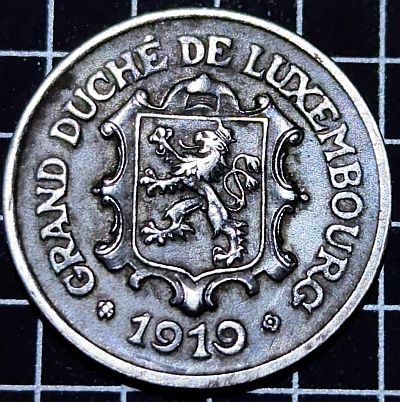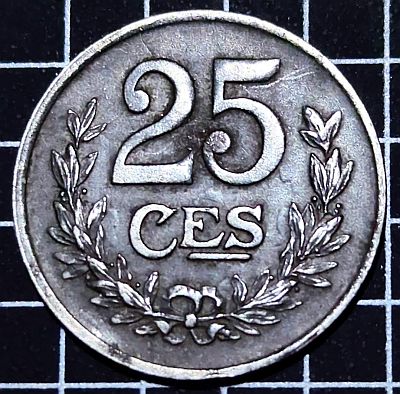A forked-tail rampart lion on a decorative shield, from a landlocked Grand Duchy
Luxembourg
The Grand Duchy of Luxembourg is a small country landlocked by Belgium, France and Germany. With an area of just 2,586 sq km (994 sq mi) Luxembourg is quite small. For context, that is only 2/3 the area of Rhode Island, the smallest US state, and ranks 168 out of 195 UN recognised countries.
(Map of Europe (light green) with Luxembourg, highlighted and circled in dark green. Source: Wikipedia)
Siegfried, count of the Ardennes (from France), is said to have founded Luxembourg in 963, when he exchanged some lands with the Saint Maximin Abbey in Trier (Germany). In this exchange, in return for land located in Feulen near Ettelbruck, he acquired an old castle built on a rocky promontory overlooking the Alzette valley. Siegfried had a small castle built on the site and, for the first time, history recorded the name of Luxembourg (‘Lucilinburhuc’). This castle formed the nucleus of the future city.
Controlled by a series of rulers up to the 1600s, Luxembourg was then passed between France, Spain and Austria. In 1815, the Congress of Vienna elevated Luxembourg to the status of independent state, ceded in a personal capacity to the King of the Netherlands ‘to be possessed in perpetuity by him and his successors in complete ownership and sovereignty’. As such, the Kings of the Netherlands also became the Grand Dukes of Luxembourg as the lineage of the Orange-Nassau dynasty. This lasted until 1890 when the last male descendent of the Orange-Nassau dynasty passed away. The crown was passed on to the Nassau-Weilburg branch of the family, which was the only lineage of the Nassau family to have a male descendant. Luxembourg thus ended up with a dynasty of its own.
A German attempt to annex Luxembourg in 1914 failed. This failed attempt encouraged Luxembourg to free itself from the ‘Zollverein‘ (German customs union). It then signed an economic agreement with Belgium in 1921 known as the UEBL (Union économique belgo-luxembourgeoise), and adopted the Belgian Franc as the currency of the UEBL, whilst conserving the Luxembourgish franc as its national currency.
Obverse

Numista describe the obverse as: “Luxemburgish shield decorated with a lion with forked tail, rampant the left on a field not burrowed, surrounded by the legend and the mint year between two rosettes with the exergue.”
The forked tail of the lion goes back to 1282 when Henry V of Luxembourg’s son, also Henry, inherited Limburg as well. To represent the two titles joined back together in the one person, the Lion on the Shield of Luxembourg was changed to having a forked tail. Tradition says that the two ends of the tail are crossed in saltire, although this is sometimes missed by artists.
Reverse

The reverse contains the value (with Centimes written as CES) surrounded by a pair of branches of oak, tied at the bottom.
The coin itself is Iron, a coin I became interested in when writing up the 1942 Sweden 5 Öre. It turns out that coin was one of the later coins made purely of “iron” – though the last were the Finnish Markkaa coins issued up to 1953 (The Swedish coins were only minted up to 1950). I explored Iron in more detail when covering the 2017 Lebanon 500 Līrah / Livres.
Finally, back to this 25 Centimes coin, it was issued in 1919, 1920 and 1922, with mintages of 804,000, 800,000 and 600,000. Later variants of the 25 Centimes coin were issued in:
- 1927 (Copper-Nickel)
- 1930 (Bronze)
- 1938 (Nickel-silver)
- 1946-7 (Bronze)
- 1954-72 (Aluminium-magnesium)
These later coins all featured a design which simply said “Luxembourg” under the shield on the obverse. The reverse of the later coins featured the value in smaller lettering with the date below and a single oak left on the left.


Leave a Reply